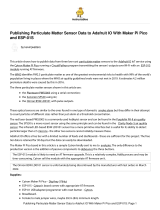
Windows:
• Download and unzip the demo to your Windows desktop, refer to Raspberry Pi's guides to set up
the Windows software environment settings.
• Press and hold the BOOTSEL button of Pico, connect the USB of Pico to the PC with a
MicroUSB cable. Import c or python program into Pico to make it run.
• Use the serial tool to view the virtual serial port of Pico's USB enumeration to check the print
information, the DTR needs to be opened, the baud rate is 115200, as shown in the picture
below:
Others:
- The LED light are not used by default, if you need to use it, you can solder a 0R resistor on the R8
position. Click to view the schematic diagram.
- The INT pin of DS3231 is not used by default. if you need to use it, you can solder the 0R resistor
on the R5,R6,R7 positions. Click to view the schematic diagram.
o Solder the R5 resistor, connect the INT pin to the GP3 pin of Pico, to detect the
output status of the DS3231 alarm clock.
o Solder the R6 resistor, connect the INT pin to the 3V3_EN pin of Pico, to turn off the
Pico power when the DS3231 alarm clock outputs low level.
o Solder the R7 resistor, connect the INT pin to the RUN pin of the Pico, to reset Pico
when DS3231 alarm clock outputs low level.









